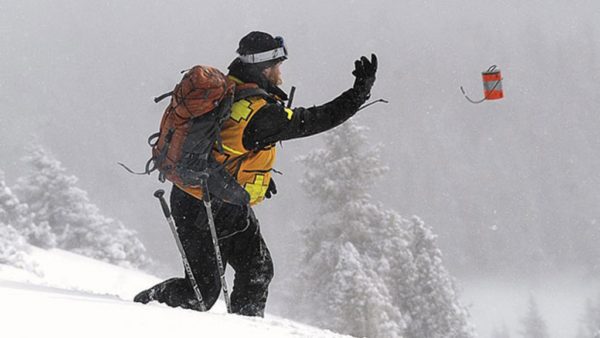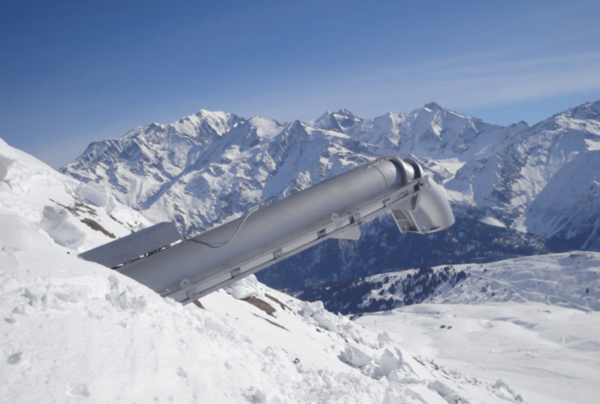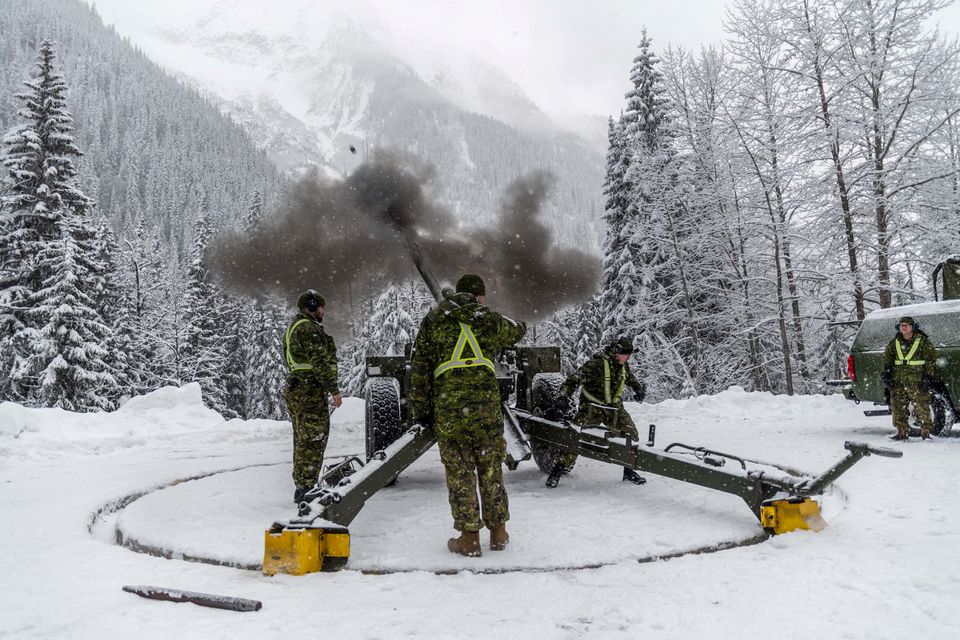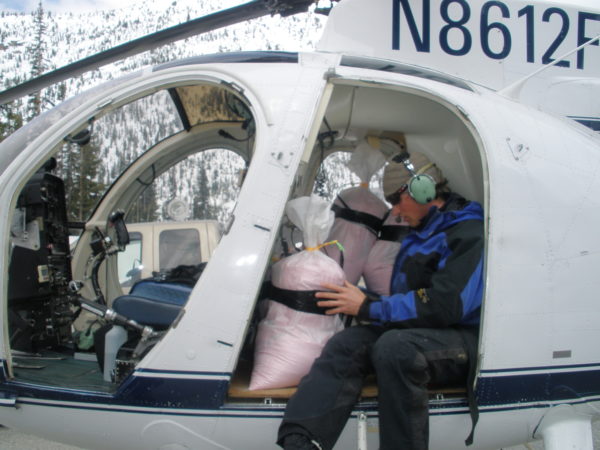Initiation of an avalanche by an explosive.
Explosive triggers are commonly used for avalanche mitigation and snowpack testing by ski areas, highway departments, railways, and mines. While there are many ways to initiate avalanches with explosives, delivery methods generally consist of either hand placement or remote placement. For example, small, hand-delivered explosives (2-3 lbs) are commonly used to reduce the avalanche risk at ski areas. It is also common for mitigation teams to utilize artillery and/or remote avalanche control systems (RACS) to create avalanches in start zones that are difficult to access, or more dangerous to workers.

Small hand shots (typically 2 or 3 pounds of explosive) delivered onto the snow surface have a larger impact than a skier or rider, but a smaller impact than larger or suspended explosives. Credit: Associated Press

This Gasex system delivers a propane/oxygen explosion just above the snow surface. It is self-contained, remotely detonated, and can be fired every two minutes as fuel allows. Credit: Natural Hazards Control Solutions


